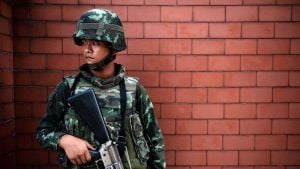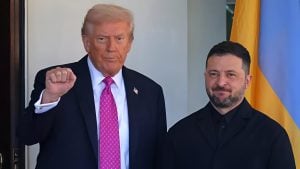Indra Navy – 20
- The 11th edition of exercise INDRA NAVY, a biennial bilateral maritime exercise between Indian Navy and Russian Navy is scheduled in the Bay of Bengal from 04 to 05 September 2020. Initiated in 2003, Ex INDRA NAVY epitomises the long-term strategic relationship between the two Navies.
- Whilst the exercise is being undertaken in the Bay of Bengal, Shri Rajnath Singh, the Hon’ble Defence Minister of India, is on a visit to Moscow from 03 September 2020 on the invitation of Defence Minister of the Russian Federation, General Sergei Shoigu to discuss bilateral cooperation and issues of mutual interest and commemoration of the 75th anniversary of victory in World War II.
- This exercise has matured over the years with increase in scope, complexity of operations, and level of participation. The primary aim of exercise INDRA NAVY-20 is to further consolidate inter-operability built up by the two Navies over the years and also to enhance understanding and procedures for multi-faceted maritime operations. The scope of this edition includes wide-ranging and diverse activities across the spectrum of maritime operations. Due to restrictions imposed by the COVID-19 pandemic, INDRA NAVY-20 would be undertaken in a ‘non-contact, at sea only’ format.
- The Indian Navy will be represented by guided missile destroyer Ranvijay, indigenous frigate Sahyadri and fleet tanker Shakti, along with their integral helicopters. Sahyadri has been presently redeployed to aid MT New Diamond, which has caught fire off the coast of Sri Lanka.
- The Russian Federation Navy will be represented by destroyer Admiral Vinogradov, destroyer Admiral Tributs and fleet tanker Boris Butoma of the Pacific Fleet, based at Vladivostok.
- The exercise is aimed at enhancing interoperability, improving understanding and imbibing best practices between the two navies, and would involve surface and anti-aircraft drills, firing exercises, helicopter operations, seamanship evolutions etc. The last edition of the exercise was conducted off Visakhapatnam in December 2018.
- Exercise INDRA NAVY-20 will help to further boost mutual confidence and cooperation between the two Navies and would reinforce the long-standing bond of friendship between the two countries.
Rajnath Singh meets Chinese defence minister, calls for bringing ties ‘back on right track’
- Defence minister Rajnath Singh on Friday pushed for the restoration of status quo ante at all friction points along the Line of Actual Control (LAC) in eastern Ladakh and called for disengagement of troops in an expeditious way during the much-expected meeting with his Chinese counterpart General Wei Fenghe in Moscow.
- The meeting between Singh and Wei, on the sidelines of the defence ministers’ meet at the Shanghai Cooperation Organisation (SCO), was the first high-level political face-to-face meeting between India and China since the border row erupted along the LAC in eastern Ladakh in early May.
- A Press Trust of India report from Moscow said at the meeting on Friday, which lasted for more than two hours, the Indian delegation strongly objected to Chinese army’s fresh attempts to change the status quo in the southern bank of Pangong lake and insisted on the resolution of the standoff through talks.
- According to China’s official news agency, Xinhua, Wei told Singh that the responsibility of the ongoing tension lies entirely with India – an allegation that New Delhi has brushed off repeatedly, saying that the border aggression has actually been shown by the troops of the People’s Liberation Army (PLA).
- The same Xinhua report in Mandarin from Moscow quoted Singh as saying that India hoped that two sides will “…adopt a responsible attitude, fully disengage front-line forces as soon as possible, avoid taking measures that may escalate or complicate the situation, and avoid turning differences into disputes so as to bring bilateral military relations back to the right track as soon as possible.”
- External affairs minister S Jaishankar and National Security Advisor Ajit Doval have previously held separate telephonic talks with Chinese foreign minister Wang Yi to resolve the standoff.
- On Thursday, New Delhi squarely blamed Beijing for the tensions along the LAC over the past four months and said the only way forward was through negotiations – reflecting the impasse created by fresh attempts by Beijing to alter the status quo along the disputed border over the weekend.
- At the meeting, Wei said that recently the relations between the two countries and the two militaries have been seriously affected by the border issue and that it was very important for the two defence ministers to have a face-to-face and candid exchange of views on relevant issues, according to Xinhua.
- Wei added that the “cause and truth” of the current tension on the China-India border are very clear, and the responsibility lies entirely with the Indian side.
- “Not an inch of China’s territory should be lost. The Chinese military has the resolve, capability and confidence to safeguard national sovereignty and territorial integrity,” the Chinese defence minister said.
- The two sides should earnestly implement the important consensus reached by President Xi Jinping and Prime Minister Narendra Modi and stay committed to resolving the issue through dialogue and consultation, Wei said.
- The Chinese defence minister said that Beijing hoped that the Indian side would strictly abide by the series of agreements reached by the two sides, effectively strengthen the control over front-line troops, and refrain from provocations across the current LAC.
- India should not take any actions that may cause the situation to escalate, and not deliberately hype up or spread negative information, the Chinese said.
- The two sides should bear in mind the overall interests of China-India relations and regional peace and stability, make joint efforts to meet each other halfway, cool down the current situation as soon as possible and safeguard peace and tranquillity in the China-India border areas, Wei said at the meeting.
- “The focus of the talks between the two defence ministers was on ways to resolve the prolonged border standoff,” an unnamed source told PTI.
- Defence secretary Ajay Kumar and Indian ambassador to Russia DB Venkatesh Varma were part of the Indian delegation at the talks that began at around 9:30pm IST at a prominent hotel in Moscow.
- Several rounds of talks have been conducted through diplomatic and military channels to end the standoff that began in May.
- The progress suffered a blow when Chinese troops resorted to what were described as “provocative military movements” on the south bank of Pangong Lake during August 29-30. They were thwarted by counter-measures by the Indian side, which quickly occupied several strategic heights and hilltops, and talks between local brigade commanders since Monday to ease the fresh tensions have been inconclusive.
Army Chief visited Leh
- General MM Naravane COAS visited Leh and reviewed security situation and operational preparedness along the Line of Actual Control in Eastern Ladakh. He complimented troops for the high standards of professionalism and devotion to duty.
ITBP chief visits Ladakh border posts, gives away awards for gallantry
Director General of the Indo-Tibetan Border Police Force (ITBP) on Friday awarded on the spot Commendation Rolls and Discs for gallantry to ITBP personnel deployed in Eastern Ladakh during his visit to border outposts (BOPs) in that sector.
In his first visit to Ladakh based units, the ITBP chief, SS Deswal, met the force’s jawans deployed in the border areas and awarded them for their actions during the face offs and border skirmishes with the Chinese that took place in May and June in Eastern Ladakh.
A total 291 ITBP personnel, including three Deputy Inspectors General, were honoured by the ITBP chief during his weeklong visit to various locations.
The efforts of the field commanders and the jawans were highly appreciated by him In the Sainik Sammelans held during his tour. He praised the jawans for their courage under challenges and adverse conditions. The ITBP had announced the award for these jawans on the eve of Independence Day, 2020.
The ITBP Director General was on a visit to the BOPs located on the borders of Ladakh and reached out to most of the high-altitude BOPs via land route, at some places by crossing 17,500 feet.
The visit was primarily by road involving 10-12 hours travels every day for six days. He spent six nights at the BOPs, where he interacted and discussed various issues with field commanders of ITBP and Army.
Deswal praised ITBP troops for their bravery they exhibited at the time of need despite many challenges posed by the terrain, weather and other difficult conditions, and standing shoulder to shoulder with the Indian Army.
He also emphasised on maintaining endurance and professional skills of the troops by rigorous training. He was accompanied by Daljit Singh Chawdhary, IG (Headquarters), Manoj Singh Rawat, IG (Operations) and Deepam Seth, IG, Northwest Frontier.
Army Chief Naravane and Foreign secretary Shringla put off Myanmar trip amid LAC crisis
- India said on Tuesday that it has taken up the recent provocative and aggressive actions by Chinese soldiers and urged Beijing to “discipline and control” frontline troops even as the latest escalation over the weekend saw foreign secretary Harsh Shringla and Army chief Gen M M Naravane put off a visit to Myanmar that was to begin on Wednesday.
- The MEA said the Chinese side violated the understanding arrived at at the level of special representatives to de-escalate tension not only on Saturday night but also on Sunday even as the ground commanders of both armies were in discussion to de-escalate the situation.
- Recalling that the SRs (national security adviser Ajit Doval and Chinese foreign minister Wang Yi) had agreed that the situation should be handled in a responsible manner and neither side should take any provocative action or escalate matters, the MEA said Chinese troops violated the understanding and engaged in provocative military manoeuvres.
- The government appears to be veering around to the view that China doesn’t really want to resolve the issue and may be pushing in a concerted way to move the LAC westwards, making dialogue and negotiation doubly difficult. What makes the latest confrontation more significant is the involvement of the Tibetan exiles’ Special Frontier Force (SFF), who are credited with securing a crucial ridge in the Spanggur Gap-Chushul area and repulsing a Chinese threat, even reportedly inflicting damage on the Chinese side.
- Claude Arpi, a well-known China analyst, said, “This would probably be the biggest action by SFF against the Chinese. This will have an effect in Tibet as well as in Beijing. This comes a couple of days after the Chinese leadership held a massive meeting on Tibet. Lt Gen Subroto Saha (retired) told TOI, “The provocative movement by PLA troops on the night of August 29 appears to be a premeditated plan to execute Xi Jinping’s orders to his party, government and military leaders to solidify border defences in Tibet and ensure frontier security in the Tibet region.
‘Completely untrue,’ says China after reports claim Taiwan shot down its Sukhoi-35 aircraft
- Amid simmering tensions between China and Taiwan for the past several days, Beijing on Friday clarified that report claiming that Taiwan shot down one of its Sukhoi-35 aircraft is completely “untrue and false information.”
- “In response to the internet spread of “Taiwan shot down a CCP SU-35 aircraft?” Air Force Command solemnly refuted today that this is false information, and completely untrue,” the Ministry of National Defense of the Republic of China said in a statement.
- The Air Force Command pointed out that it strongly condemns such malicious acts by deliberately creating and disseminating false information on the Internet in an attempt to confuse the audience,’’ the Ministry added.
- The reactions from China’s Air Force came after a video claiming that Taiwan shot down a Chinese fighter jet over alleged intrusion into its airspace went viral on the social media platforms.
- In the video, it can be clearly seen that the debris of an aircraft has fallen in a colony. It was reported that Taiwan used the US Patriot missile defense system to bring down the Chinese jet.
- According to media reports, Taiwan had in the past several times warned Chinese aircraft to stay out of Taiwan’s airspace. It is being told that the pilot has been injured in this incident. If this incident proves to be true, then a war-like situation may arise before the two hostile countries.
- America has been supporting Taiwan in its skirmish against China. Taiwan’s Navy and Airforce are on the alert to deal with any type of aggression from China.
- Taiwanese President Tsai Ing-wen has made several new announcements to further strengthen the reserve military forces to increase its military strength.
- Taiwan has resorted to such a stance after China implemented the National Security Act in Hong Kong and also threatened to merge Taiwan under a two-nation system. Apart from this, China has always threatened to combine Taiwan with military force in its country.
Hundreds of Tibetans give warm send off to Special Frontier Force soldiers
- Hundreds of Tibetans carrying the national flags of Tibet and India on Friday gathered in the Himachal Pradesh capital to give a warm send off to Special Frontier Force soldiers who were heading in convoys to frontier areas along China.
- Standing on the roadside carrying incense sticks, the Tibetans presented them with the traditional white scarf as a mark of honour.
- They raised slogans and sang songs about India-Tibet friendship.
- “It is a great moment to see our brothers defending the Indian borders from the repeated incursions by the Chinese army,” an elated Tashi Phuntsok said.
- His friend Norbu Wangyal added: “It’s just an occasion to express gratitude to India for hosting us in exile.” He said the Tibetans are genetically sturdy to take on the Chinese troops in high mountain passes.
- The SFF was raised following the 1962 war against China. Initially, the force comprised only Tibetans, but later Gurkhas too were inducted. It was originally known as Establishment 22.
- Its unit is deployed on some major high-altitude fronts of the Line of Actual Control (LAC) along the Chinese border.
Major Chinese Tank, Infantry Build-Up in South Pangong As Standoff Intensifies
- There has been a major force build-up of Chinese tanks and infantry forces in the South Pangong region of Eastern Ladakh after the Indian Army seized the initiative and gained control of several key heights in the area on August 30. Given the range of their guns, Chinese artillery would be located in ‘depth’ positions, more than twenty kilometres away from the Line of Actual Control.
- Source have indicated that the presence of additional tank forces has been detected not too far from Chinese positions in Moldo in South Pangong. However, the movement of Chinese heavy weaponry continues to be well sighted by the Indian Army ”which dominates the heights from Thakung to beyond Mukpari.” This includes control of both shoulders of the crucial Spanggur Gap, a high-altitude pass that spans more than two kilometres in width through which tanks can operate.
- The Indian Army has reinforced its own tank formations in the area and deployed additional forces to shore up the heights that it holds along the disputed Line of Actual Control in the region.
- By dominating the heights, Indian infantry forces are in a position to engage Chinese armour and troop formations with anti-tank guided missiles, rockets and other weapons. India also operates missile-armed T-90 heavy main battle tanks in addition to upgraded T-72M1 tanks in high-altitude areas in Eastern Ladakh.
- Despite the over-all domination of Indian forces in the region, the Chinese Army continue to hold positions on Black-Top and Helmet, two features on the Chinese side of the Line of Actual Control. Multiple sources have told that both positions are within the range of Indian soldiers who occupy near-by heights and hold ground at the base of these features. In other words, any lengthy maintenance and replenishment of these Chinese posts would be challenging.
- There has been heavy air activity as well along the Line of Actual Control with the Chinese Air Force stepping up its fighter deployment from both the Ngari-Gunsa and Hotan air bases in Tibet. The bulk of the Chinese fighter-flying has been done by home-built versions of the Sukhoi 30 fighter which also happens to be the mainstay of the Indian Air Force.
- The situation along the LAC is “slightly tense”, Army chief General Manoj Mukund Naravane said this morning, adding that “we have undertaken some precautionary deployments for our own safety and security”. “In view of the situation, we have undertaken some precautionary deployments for our own safety and security. These deployments, we undertook along the LAC,” Army chief General Manoj Mukund Naravane said today, referring to the de facto border with China. “We are sure that the problem can be resolved fully through talks,” the Army chief added.
- Both the IAF and the Chinese Air Force have deployed electronic warning and support aircraft in the region. It is unclear if the Chinese are performing round-the-clock fighter sweeps in the region.
- The Indian Air Force, which is heavily deployed at multiple air bases across North India would respond to Chinese air activity by flying its own combat-sorties across the Line of Actual Control.
- It is also unclear if combat aircraft of either sides have made aggressive attempts to lock their fire-control radars on each other, a prelude to firing air to air missiles. The Chief of Air Staff, Air Chief Marshal RKS Bhadauria visited Indian Air Force bases in the Northeast yesterday.
Germany launches Indo-Pacific strategy with ‘key role’ for India
- Germany, current EU president and Europe’s biggest economy, has launched its Indo-Pacific strategy with India that is expected to play a key role in Berlin’s outreach in the region where China’s aggressive foreign policy has rattled countries.
- The strategy released on Wednesday by German Foreign Ministry has several indirect references to Chinese behaviour that challenged rules-based world order. Berlin’s strategy also suggested opening dialogue with institutions where India plays a key role — Bay of Bengal Initiative for Multi-Sectoral Technical and Economic Cooperation and Indian Ocean Rim Association ‒ in the areas of business and maritime safety, as well as disaster risk management.
- The German government also announced that it will work to maintain rules-based order together with partners in the Indo-Pacific region. To this end, it will cooperate with India and Japan for UN Security reforms.
- “As an internationally active trading nation and proponent of a rules-based international order, Germany – embedded in the European Union – has a great interest in participating in Asia’s growth dynamics and in being involved in shaping the Indo-Pacific region, as well as in upholding global norms in regional structures,” suggested the strategy outlining Germany’s key principle for the region.
- The strategy also contains veiled but firm criticism of Chinese actions in the South China Sea and its fallout on global trade in what mirrors India’s position on the issue.
- “More than 90 percent of the world’s foreign trade is conducted by sea, a large part of which via the Indian and Pacific Oceans. Up to 25 percent of the world’s maritime trade passes through the Strait of Malacca. More than 2000 ships per day transport goods between the Indian Ocean and the South China Sea via this bottleneck. A disruption to these maritime trade routes and thus to the supply chains to and from Europe would have serious consequences for the prosperity and supply of our population,” the strategy pointed out.
- “In the Indo-Pacific region, too, it is not the law of the strong that must prevail, but the strength of the law. This also applies to the shipping routes through the Indian Ocean and the Pacific. The UN Convention on the Law of the Sea as a comprehensive maritime regulatory and cooperation framework and the freedoms of navigation enshrined therein are universal. Germany is prepared to promote the enforcement of rules and norms in the region.”
- Millions of jobs in Germany depend on these trade and investment relations. In view of this great potential, Germany has a vital interest in open markets in the region, according to the strategy. “The federal government firmly believes that rules-based free trade enhances prosperity on both sides.”
- Echoing similar views from Delhi on the inclusivity of the Indo-Pacific region, the German government noted, “The Indo-Pacific region can only benefit from peace, security and stability if all countries in the region do their part in equal measure. The federal government supports inclusive regional cooperation initiatives. It does not consider containment and decoupling strategies to be conducive – not least in view of the strong interdependence of national economies and the complexity of global challenges such as climate change, peacekeeping and fragile statehood. The ASEAN-centric security architecture offers a valuable framework for involving key actors.”
REVIEW QUESTIONS
- Which among the following countries is the current EU President & is Europe’s largest economy?
- United Kingdom
- France
- Switzerland
- Germany
ANSWER: D
- Which of the following statements is/are correct?
- The 11th edition of exercise INDRA NAVY, a maritime exercise between Indian Navy and Russian Navy is scheduled in the Bay of Bengal from 04 to 05 September 2020.
- Ex INDRA NAVY was initiated in 2003.
- Whilst the exercise is being undertaken, Shri Rajnath Singh, the Hon’ble Defence Minister of India, is on a visit to Moscow.
- 1 only
- 2 and 3 only
- 1 and 3 only
- 1, 2 and 3
ANSWER: D



















